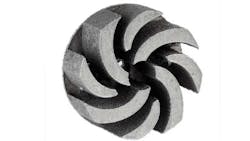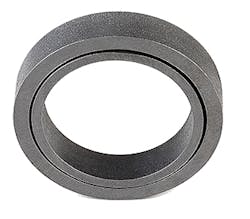Metals for Gradient Material Design with Additive Manufacturing
As a technology, 3D printing cannot yet be considered “an industry,” because there are still so many opportunities for new developers to enter the market with new ideas or products, and consumers have yet to identify clear preferences for production machinery, programs, and materials. This is important for 3D printing metals, because metal alloys can be proprietary prizes to a manufacturer wanting to produce a particular type of product.
Enter NanoSteel™ Company, a developer of “nano-structured” steel alloys used for surface coatings, foils, powder metals, and in sheet metal products. Last fall, NanoSteel introduced “engineered powders” for additive manufacturing of metal components. It described these as powder metals developed for specific design objectives, like wear resistance. In addition to additive manufacturing, the powders are being promoted for shot peening, hot pressing, and isostatic pressing. NanoSteel claimed the powders are “unique due to their chemistries, which create metal-matrix composite structures at the nanoscale.”
Now, NanoStee reports that its AM materials will support metal 3D printing of complex high hardness parts, including customized, layered properties through gradient material design.
Following last year’s introduction of AM wear materials, NanoSteel reports its formulations are capable of producing critical parts like bearings and impellers using the powder-bed fusion process. The parts have been measured to be fully dense and crack-free, with hardness levels >1,000 HV, according to NanoSteel. This, it claims, represents “a significant step in the development of metal powders that enable affordable, robust industrial components produced on-demand through the 3D- printing process.
Working with Connecticut Center for Advanced Technology, the company said it used a combination of high hardness and ductile alloys to create a part featuring a gradient design. Part samples were generated using freeform direct laser deposition, and with a single additive manufacturing process “achieved a seamless transition between the hard and ductile properties without subsequent heat treatment.”
This result is the equivalent of “digital case hardening,” it stated, “delivering impact resistance and overall robustness in addition to high hardness and wear resistance in a single part.” For product designers and OEMs, this will mean more design flexibility toward meeting part-performance requirements, while taking advantage of the operational efficiencies of AM (e.g., on-demand availability, lower inventory, and lower transportation costs.)
“Proprietary metal alloys that support the cost-effective 3D printing of high-quality parts will help accelerate the transition from subtractive to additive manufacturing across applications such as wear parts, bearings, and cutting tools,” stated Harald Lemke, NanoSteel’s general manager of Engineered Powders. “The company’s AM powder offerings make it possible to design exclusively for the function of a high hardness part, releasing designers from the limitations of conventional production processes and opening new opportunities to improve performance.”
About the Author
Robert Brooks
Content Director
Robert Brooks has been a business-to-business reporter, writer, editor, and columnist for more than 20 years, specializing in the primary metal and basic manufacturing industries. His work has covered a wide range of topics, including process technology, resource development, material selection, product design, workforce development, and industrial market strategies, among others.

